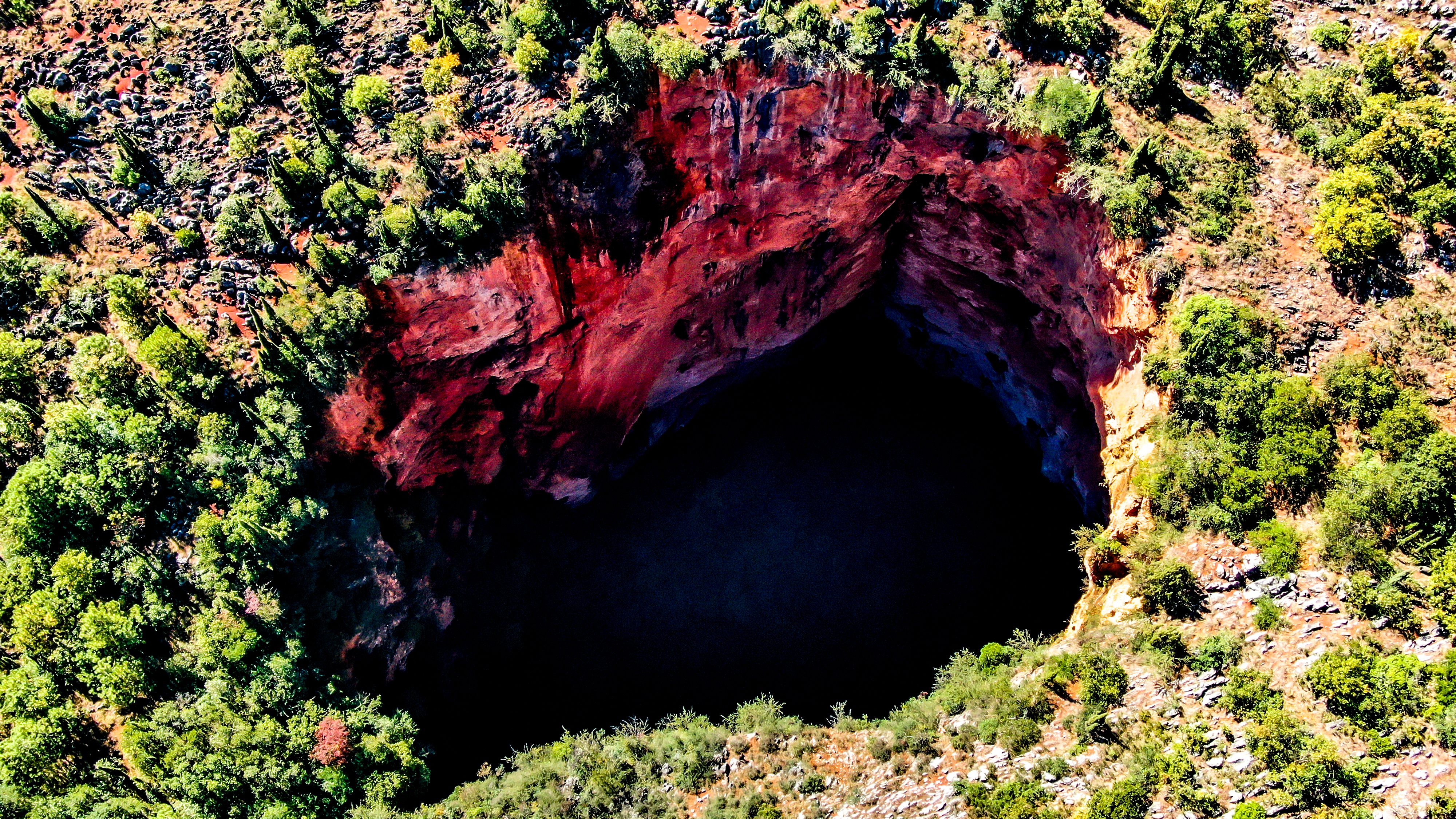China sinkholes: Why country is host to some of world’s most dramatic craters
Latest discovery of a sinkhole housing an entire forest in Guangxi takes the number in a single county there to 30
Your support helps us to tell the story
From reproductive rights to climate change to Big Tech, The Independent is on the ground when the story is developing. Whether it's investigating the financials of Elon Musk's pro-Trump PAC or producing our latest documentary, 'The A Word', which shines a light on the American women fighting for reproductive rights, we know how important it is to parse out the facts from the messaging.
At such a critical moment in US history, we need reporters on the ground. Your donation allows us to keep sending journalists to speak to both sides of the story.
The Independent is trusted by Americans across the entire political spectrum. And unlike many other quality news outlets, we choose not to lock Americans out of our reporting and analysis with paywalls. We believe quality journalism should be available to everyone, paid for by those who can afford it.
Your support makes all the difference.The discovery of a remarkable forest inside a sinkhole in China has brought new attention to the unusual topography of the Guangxi region.
Scientists from the Institute of Karst Geology at the China Geological Survey say the sinkhole in Leye County, southern Guangxi, may contain never-before-seen species in its ancient forest.
The bottom of the 630ft-deep sinkhole, which measures 1,000ft (304m) in length and 490ft (149m) in width, is covered in dense plants, including rare bamboo species, and trees that stretch nearly 130 feet high with their branches leaning toward the sunlight that filters through cave entrances.
And while the discovery appears otherworldly, it is not as rare in this region as people might expect. In Leye County alone, there are about 30 major sinkholes that have been discovered so far, including the latest discovery in the Ping’e village.
Sinkholes are found all around the world and are formed due to several natural and manmade factors. So why are the ones in Guangxi so large and verdant, and why is Leye County in particular filled with so many of them?
What are sinkholes
A sinkhole is a depression that opens up to the surface and into which everything around it drains.
According to the US Geological Survey website, sinkholes are especially common in what geologists call “karst terrain”. Karst is an area where the rock below the land surface is soft — made up of limestone, carbonate rock, salt beds, or other rocks that can be naturally dissolved by groundwater circulating through them. As the rock dissolves, spaces and caverns develop underground.

Sinkholes occur dramatically because when the space inside gets too big, it fails to hold the land above and a sudden collapse of the surface covering occurs.
The occurrence of sinkholes can appear similar to a landslide, but a true natural sinkhole requires that a void form from below.
Why does China have so many sinkholes?
While sinkholes can open up gradually or rapidly, sometimes swallowing buildings or vehicles and even causing deaths in China as well as in several areas around the US, the Chinese region of Guangxi has reported what may be the highest number of sinkholes found in a single area.
In November 2019, Xinhua Net reported the discovery of a giant cluster of 49 sinkholes in a 230-square-mile patch of land in the Guangxi Zhuang Autonomous Region. The largest of the sinkholes has a diameter of 1,706 feet and a depth of 1,050 feet.
Before this, in 2016, scientists discovered what was then the world’s largest cluster of sinkholes in Shaanxi province in Northwest China. The world’s deepest underwater sinkhole was also found in the region, in the South China Sea.
In 2020, six people were killed when a sinkhole swallowed a bus and a number of pedestrians in northwest China. And in 2016, a huge sinkhole opened in the middle of a busy intersection in China with the incident recorded on surveillance cameras.
Another sinkhole opened in 2021, during massive floods in China’s Zhengzhou, when a piece of road collapsed around it, with several people being sucked into the deep hole.
The reason why these areas are more prone to such depressions is that they fall in the region known as the South China Karst, a UNESCO World Heritage site, spreading over the provinces of Guizhou, Guangxi, Yunnan and Chongqing and covering 97,125 hectares.
According to experts, the sinkholes found in the region can appear much more majestic than in others due to the rugged beauty of the surrounding landscape.
Sinkholes here have a more dramatic appearance and scale than those in Florida, for instance, which is another area largely underlain by limestone and highly susceptible to this phenomenon.
“Because of local differences in geology, climate and other factors, the way karst appears at the surface can be dramatically different,” George Veni, the executive director of the National Cave and Karst Research Institute (NCKRI) in the US, told Live Science.
He added: “So in China you have this incredibly visually spectacular karst with enormous sinkholes and giant cave entrances and so forth.
“In other parts of the world you walk out on the karst and you really don’t notice anything. Sinkholes might be quite subdued, only a metre or two in diameter. Cave entrances might be very small, so you have to squeeze your way into them.”

Join our commenting forum
Join thought-provoking conversations, follow other Independent readers and see their replies
Comments